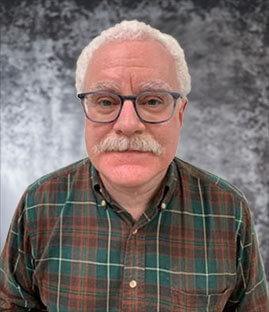Endoscope optical design is vital to creating an endoscope that functions appropriately. The visual designer must consider the type of light source used, the endoscope’s size and shape, and the desired field of view. They must also ensure that the image is relayed to the monitor correctly.
Designing an endoscope that functions appropriately is a difficult task that requires knowledge of many different disciplines, including optics, engineering, and medicine. However, the results can be life-changing for patients who need diagnosis and treatment.
Basic Optical Elements for Endoscopes
An endoscope typically contains the following essential optical elements:
Light Source:
This fiber optic cable usually carries light from an external light source into the endoscope. The light source must be bright enough to illuminate the examined area but not so bright that it causes discomfort for the patient.
Lens System:
This is used to focus the light from the light source onto the examined area. The lens system must be designed to relay the image to the camera correctly.
Camera:
This captures images of the examined area and relays them to a monitor. The camera must be small enough to fit into the endoscope but still provide a clear image.
Monitor:
This displays the images captured by the camera. The monitor must be large enough to give the doctor a clear view of the examined area.
Control System:
This is used to operate the endoscope and adjust the light source, lens system, and camera. The control system must be easy to use so the medical professional can focus on the examination.
Illumination and Imaging Optics
These are two fundamental aspects of optical engineering. Illumination optics deals with the design of light sources and controlling light to create desired effects. On the other hand, imaging optics deals with capturing and manipulating images.
When it comes to endoscopes, both illumination and imaging optics are essential. The light source must be designed to provide the correct amount of light, and the designer must prepare the lens system to focus that light correctly. Additionally, the camera must be designed to capture clear images, and the monitor must display those images.
Rigid Endoscopes vs. Flexible Endoscopes
There are two main types of endoscopes: rigid endoscopes and flexible endoscopes.
Rigid Endoscopes
Rigid endoscopes are most commonly used to examine the throat, lungs, stomach, intestines, or urinary tract. Doctors and surgeons can also use them to take biopsies (tissue samples) or remove foreign objects from the body. Rigid endoscopes are different from flexible endoscopes, also used by doctors to look inside the body.
The construction of a rigid endoscope is similar to that of a telescope. There is a tube with an eyepiece at one end and a camera at the other. The tube is usually about 30 cm long and 1 cm in diameter. The camera is connected to a monitor, which allows the doctor to see what the camera is seeing.
Flexible Endoscopes
The most commonly used flexible endoscopes are used to examine the throat, esophagus, stomach, intestines, or urinary tract. Flexible endoscopes differ from rigid endoscopes because they have a bending section in the middle that allows them to be inserted through small openings.
Video and Non-Video Endoscopes
When designing an endoscope, there are typically two different endoscopes that need to be considered: video endoscopes and non-video endoscopes.
Video Endoscopes
Video endoscopes are the most common type of endoscope. They have a camera at the tip of the endoscope that captures images, which are then displayed on a monitor. While these can be used for general examinations, they are most commonly used for procedures that require real-time visualization, such as surgery.
Video endoscopes can be more costly due to the added complexity of the camera system. However, they allow doctors to use minimally invasive techniques, which can lead to shorter recovery times for patients.
Non-Video Endoscopes
Non-video endoscopes are less common than video endoscopes. They do not have a camera at the tip, so doctors or surgeons cannot use them to capture real-time images. Instead, these endoscopes are used to take pictures or videos of the inside of the body. These images can then be viewed at a later time. Non-video endoscopes are less expensive than video endoscopes and are often used for general examinations.
Work With a Reliable Medical Engineering Partner
Endoscopes are a highly specialized type of medical device and require precision engineering. When designing an endoscope, working with a reliable medical engineering partner with experience in optical engineering and design is essential.
At Apollo Optical Systems (AOS), we have over 40 years of experience designing and manufacturing optical systems, including endoscopes. Whether needing a custom engineering project or general assembly, we offer a wide range of services to help you tackle any project.
Contact us today to learn more about our services.
About Dale Buralli
Dr. Dale Buralli has served as the Chief Scientist for Apollo Optical Systems since 2003. In this role, Dr. Buralli is responsible for the design and optical modeling of various optical systems. These systems include virtual or augmented reality, ophthalmic and other imaging or illumination systems. Additionally, he provides support for optical tooling of lens molds and prototypes, including the development of custom software for both production and metrology. Dr. Buralli got his Ph.D. in optics from the University of Rochester in 1991. Now he is an Adjunct Professor of Optics at the University of Rochester’s Institute of Optics.



